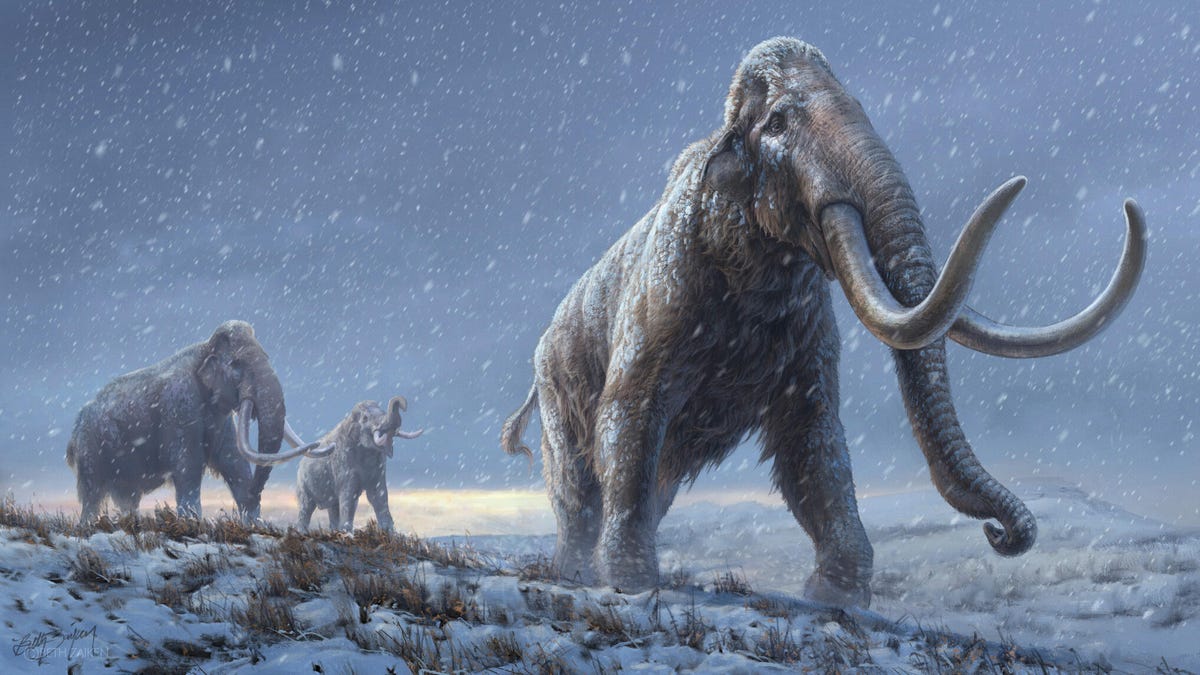1.6-million-year-old mammoth DNA uncovers lineage we never knew existed
The breakthrough research reveals an entirely new lineage of mammoth, previously unknown to science.

Ancient DNA has been recovered from three mammoth specimens.
When Love Dalén first began studying ancient DNA as a Ph.D. student back in 2002, one of his colleagues suggested working on lemmings, the tiny arctic rodents and '90s video game icons. "Everyone is doing mammoths," she told Dalén, "it's very competitive." The hulking, ancient proboscideans have captured the imagination of the public and scientists for years -- and when an opportunity arose for Dalén to study the famous woolly mammoth, he couldn't resist. He wanted to understand why the creatures went extinct.
But on Wednesday, Dalén and 21 other scientists looked at the other end of the woolly mammoth's timeline: its origin. In a history-making paper, published in the journal Nature, the team announce their retrieval of DNA from mammoth specimens over a million years old -- demolishing the record for the oldest ancient DNA ever sequenced by almost 900,000 years.
"It's an amazing paper," says Sally Wasef, an ancient DNA researcher at Griffith University in Australia. She isn't affiliated with the research.
The breakthroughs are twofold. First, the team was able to isolate short, degraded DNA fragments from teeth samples and obtain the genetic code via recent improvements in sequencing and data analysis techniques.
To sequence the ancient DNA, the team examined mammoth molars from three different mammoths unearthed in the Siberian permafrost a few decades ago. "We knew that some of these teeth were from the earliest woolly mammoths," says Dalén. He says the team "got small pieces of the roots from these teeth," which usually weigh a few kilograms, from their collaborators in Russia for study. For a megaannum, the molars were protected from degradation thanks to the freezing cold temperatures present at Siberia's high latitudes.
A mammoth tusk on Wrangel Island, the location of the last known woolly mammoths some 2,500 years ago.
DNA degradation puts an upper limit on how far back scientists can look. Over time, DNA breaks down into tiny fragments which are then also mixed in with a lot of other DNA from the environment. "It starts becoming difficult to see the difference between mammoth DNA, bacterial DNA, human DNA and plant DNA," says Dalén. After about 1.5 million years, it becomes too degraded for scientists to piece back together.
In this new research, the team was operating right at the limit. Using high-throughput sequencing and advanced computational analyses, the team stitched together DNA from three specimens, using modern-day elephant genomes as a blueprint. This helped age the beasts, too. Two of the samples, dubbed Krestovka and Adycha, were 1.65 million and 1.34 million years old, respectively. A third, younger specimen, Chukochya, was 870,000 years old.
The DNA sequence also led to the second breakthrough: The team was able to assess mammoth evolution and speciation over a million years ago using the three samples. Krestovka's data pointed to an entirely new lineage of mammoth, previously unknown to science. This was something of a surprise for the team.
"We thought everything back around a million years would be the ancestors of the woolly mammoth," Dalén notes. "It turns out that there were two different types of mammoth" roaming across Siberia a million years ago.
The team wasn't able to get enough data to really say anything about what Krestovka's lineage looked like -- there's not enough DNA to take a good look at the genes -- but they could show Krestovka did not contribute to the origin of the woolly mammoth.
Rather, it likely split from the woolly mammoth's ancestor some 2 million years ago and then gave rise to the Columbian mammoth -- a species that existed in North America, where the climate was warmer. The Columbian mammoth arrived there sometime around 1.5 million years ago, so the timelines match up neatly.
About 1.4 million years later, the woolly mammoth found its way to North America, and the Krestovka lineage and woolly mammoth may have interbred to give rise to the Columbian mammoth. The team reasons that along the way this interbreeding occurred, but more work needs to be done to understand the origins of the Columbian mammoth.
Both breakthroughs will contribute to furthering paleogenomics, the study of ancient DNA from extinct species.
Wasef notes the techniques used to isolate and sequence the mammoth DNA could be useful in analyzing ancient DNA from elsewhere in the world, too. The permafrost is likely the only place we'll be able to look a million years into the past, however. Warmer climates like those in Australia, where Wasef is based, don't preserve DNA quite as well -- still, she's hopeful she can apply the techniques to her own work.
Dalén's interest lies in understanding how species emerged in the Early and Middle Pleistocene, around the same time as the mammoths. "Going forward, it will be really interesting to investigate evolution at this timescale in other species as well," he says.
Oddly enough, that could mean coming full circle. Maybe even back to the lemmings. But don't write off the woolly, yet.
"We're not done with the mammoths either," says Dalén. "There's quite a lot to do."

